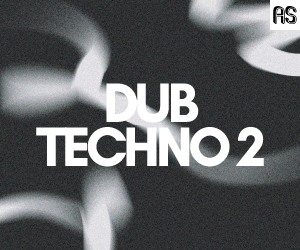For all artists (and record labels too), having a well prepared and professional press kit can be an extremely valuable tool. It can assist in getting your music signed to a record label and prove invaluable when dealing with magazines, websites, radio stations or any others who may want to feature you. For a record label, a press kit could be instrumental in getting your catalogue added to a download store or taken on by a distributor. In this article, we'll focus on artists to look at the main components of a press kit and offer a few tips on how to create a great package. Notes for record labels are included at the end.
First, some Housekeeping
Before we look at the specific components of a press kit, a few quick tips on housekeeping.
1. Your press kit should always be kept up to date; sending somebody out of date information always looks unprofessional. If your press kit is well organised then keeping it current should only take a few moments every now and then.
2. It should be well presented; some simple document formatting and addition of logos/photos into the document can make a huge difference.
3. Having it available to send to people via DropBox or a similar will allow you to constantly update the document and have the latest versions come through automatically.
Biography
Your biography is the fundamental part of the press kit; it is your chance to show other people the highlights of you career. Having a well written biography is a skilled task, and it can be worthwhile investing some money to use somebody who knows what they are doing. The information needs to be clear and concise, detailed enough to give the reader an insight, but not so detailed that it becomes boring and turns them off (apart from your mum does anybody really care that you got grade 5 piano aged 12?).
References and quotes can be extremely useful, but a long list of record labels, collaborators and supporters is dull. Biographies are used in various places with different purposes, so you may wish to prepare one version which doesn’t ever go out of date and another which focuses more on your recent and current activities.
Discography
It can be useful to keep an up-to-date discography in your press kit. A few images of key releases can make this document more attractive than a plain text list, but don’t go overboard and include every 12”, CD and download you’ve ever appeared on.

Photographs
Photographs are a must for any press kit, and the images should always be hi-resolution (at least 300 dpi). Wherever possible use the best quality file format available, and judge based on file sizes of the images you have. Print magazines will always request high resolution images and not having these available could restrict you from achieving high profile features.
Think of it like an MP3 versus a wave file – you wouldn’t send an mp3 to be pressed onto vinyl because the quality isn’t good enough; it’s exactly the same with magazines.
As with biography writing, don’t underestimate the value of having a professional photo shoot done. You can be sure that the images will be of the highest quality and the photographer will be able to get the best out of you. To use another music analogy, you would use a professional mastering engineer to make your music sound as good as possible so why not invest in yourself with some professional shots?

A professional photographer should also be able to suggest some new ideas and concepts. Think of how many times you have seen the standard shot of a moody DJ stood in front of a brick wall or some graffiti – do something different that will make you stand out to the people looking to use your photos! Interesting, high-quality and professional photos really do make a difference to the coverage you can achieve.
Press Cuttings and Quotes
If you’ve been featured in magazines and websites previously, or you have some quotes from respected tastemakers, then include some of this information in your press kit. Again don’t go overboard, just a few key points of interest will help to build up the overall profile and presentation.

Other Artwork
If you have a logo then include this (again, high-resolution artwork is important), but avoid including packshots of every single release you’ve ever had. It will just add clutter to the pack of information and distract from the key information.
Notes for Record Labels
A record label’s press kit should include:
– A label biography
– Discography (and future releases if relevant)
– Logos (high-resolution)
– Relevant photos (perhaps of the team involved or key artists)
– Any key press clippings or quotes
Thanks to our friends at Kahua Music for the original post.









